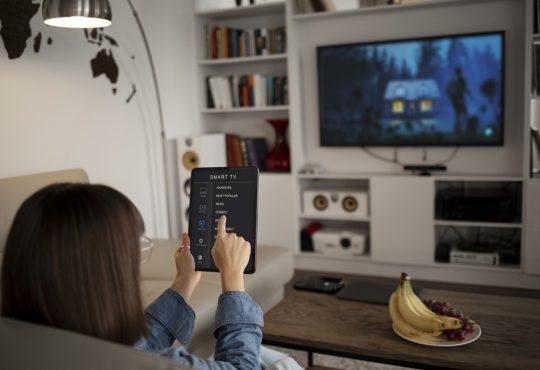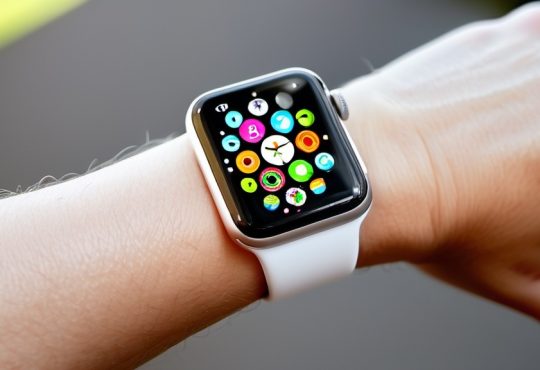The debate between Android and iPhone has long been a central point of contention among smartphone users. Both platforms have their passionate supporters and critics, largely because they cater to different needs and preferences. Android users often highlight the flexibility and variety that the platform offers, while iPhone enthusiasts praise the streamlined, controlled experience Apple provides. In this article, we’ll explore the key aspects of these differences, from customization options to security, to help you understand the pros and cons of flexibility (Android) versus streamlined choice (iPhone).
Customization Options
One of the primary selling points of Android phones is their extensive customization options. With Android, users can personalize their devices down to the smallest details, from changing the home screen layout, adding widgets, modifying app icons, to even replacing the entire user interface with custom launchers. Android users are not restricted by the default settings of their devices, which means they can change fonts, colors, notification settings, and more to suit their preferences.
For example, Android allows users to install custom widgets, which can display real-time information, such as weather updates or emails, directly on the home screen. Users can also use third-party apps to completely redesign the look and feel of their phone, whether it’s creating new gestures for navigation or adding more functionality to the lock screen.
In contrast, iPhones provide a more controlled, consistent user interface. Apple prioritizes simplicity and ease of use over customization, meaning that while users cannot alter many of the system-level features, they benefit from a smooth, consistent experience across all devices. The home screen grid and app layout in iOS have seen only minimal changes over the years, ensuring that anyone familiar with iPhones can easily use any model, old or new.
However, iPhones have made some progress in recent years with limited widget support and app library customization. But compared to Android’s open-ended flexibility, iPhone’s customization options remain significantly restricted. For users who prioritize personalization and enjoy tweaking their devices, Android’s customization is a big plus. Conversely, those who appreciate simplicity and consistency may prefer the more polished, out-of-the-box user interface of iPhones.
Device Variety
Another area where Android excels is device variety. Since Android is an open-source operating system, it is available on a vast array of devices produced by different manufacturers, such as Samsung, Google, OnePlus, Motorola, and Xiaomi. This means that users have the freedom to choose a phone based on their budget, brand preference, design, or specific features like camera quality or screen size. Whether you’re looking for a budget-friendly smartphone or a high-end flagship, Android offers a range of options to fit your needs.
This diversity of devices is particularly beneficial for users who have niche preferences. For instance, if you prefer a larger screen, several Android models exceed the size of an iPhone’s display. Additionally, there are options for more durable devices designed for outdoor use, or phones with unique features like foldable screens, something Apple has yet to introduce.
iPhones, on the other hand, are limited to Apple’s carefully curated lineup. While Apple offers fewer models compared to the wide array of Android devices, its portfolio is tightly managed. iPhones generally follow a more streamlined approach to hardware, meaning users can expect similar performance, quality, and build across the entire range.
However, the downside is that this leaves consumers with fewer choices. If you want to buy an iPhone, your decision is essentially limited to size, color, and storage capacity. This lack of diversity can be a disadvantage for those who want more control over their hardware or prefer options outside of what Apple provides.
App Store Flexibility
One of the most notable differences between Android and iPhone lies in the flexibility of their respective app stores. Android users can download apps not only from the Google Play Store but also from third-party app stores, or even directly from developers via APK files. This ability to sideload apps provides greater freedom, as users can install apps that may not be available on the official app store due to regional restrictions or Google’s policies.
For instance, in some regions, certain apps or services are not available on the Google Play Store. With Android, users can bypass these restrictions by downloading the app from other trusted sources. This flexibility also allows developers to distribute apps without adhering to the strict rules imposed by official app stores.
In contrast, iPhones restrict app downloads to the Apple App Store. While this limits user choice and flexibility, it also creates a safer environment. Apple’s strict app review process ensures that apps available in the App Store are of high quality and free of malicious code, providing a more secure experience for users.
While Android’s app flexibility is ideal for tech enthusiasts who value freedom and innovation, iPhone users benefit from a more secure and curated experience, reducing the risk of downloading potentially harmful apps.
Software Updates
When it comes to software updates, iPhones take the lead. Apple ensures that all compatible devices receive regular and timely updates simultaneously, regardless of their carrier or country. This uniformity ensures that iPhone users always have access to the latest features and security patches, making their devices more secure and up-to-date over time.
In contrast, Android software updates can be more fragmented. Because Android runs on devices from multiple manufacturers, updates must be customized and tested by each brand before they are released. Carriers may also delay updates further. As a result, it can take months for some Android devices to receive new versions of the operating system, or they may not receive them at all.
However, Google has taken steps to improve this with its Pixel lineup and the introduction of Android One, which guarantees faster updates for certain devices. Despite these efforts, iPhone’s update cycle remains unmatched in terms of consistency and longevity.
Security
Security is another area where iPhones excel. Apple’s closed ecosystem and strict app store policies provide a more secure environment for users. iPhones are less prone to malware and other security threats because Apple tightly controls both the hardware and software. Additionally, Apple’s commitment to user privacy is well known, with features like encryption, private browsing, and on-device machine learning to protect sensitive data.
Android’s open nature, while great for flexibility, comes with increased security risks. Android devices are more vulnerable to malware, especially if users download apps from outside the Google Play Store. However, Android has made significant improvements in security over the years, with built-in features like Google Play Protect, monthly security patches, and enhanced app permissions.
Ultimately, iPhones offer tighter security protocols and robust privacy features, making them a better choice for users who prioritize data protection and online safety. Android users, on the other hand, must be more cautious about where they download apps and ensure their devices are regularly updated to prevent malware attacks and security breaches.
User Experience
User experience is a key differentiator between Android and iPhones. Android provides a more flexible and customizable user experience, which is ideal for tech-savvy users who want full control over their devices. Whether it’s changing the default apps, using widgets, or customizing gestures, Android offers users a more tailored experience.
However, this flexibility can sometimes lead to complexity, particularly for users who prefer a simple, straightforward interface. The diversity of Android devices can also result in inconsistent user experiences, with some phones running heavily customized versions of Android that may feel sluggish or bloated.
In contrast, iPhones provide a more streamlined, consistent user experience. Apple’s focus on simplicity means that iPhones are easy to use right out of the box, with minimal setup required. The operating system is designed to be intuitive, making it a great choice for users who prefer a seamless, no-fuss experience.
Price Range
One of the biggest advantages of Android is its wide price range. Android phones cater to a broad spectrum of users, from those looking for budget devices to those wanting premium flagship models. Whether you’re seeking an affordable phone with basic features or a high-end device with cutting-edge technology, Android offers options for every budget.
iPhones, on the other hand, are generally more expensive, especially when considering the latest models. While Apple does offer older models at a reduced price, there are fewer options for budget-conscious buyers. However, many users argue that iPhones offer good value for money due to their longevity, software support, and resale value.
In the debate between Android and iPhone, the decision ultimately boils down to personal preference. Android shines in areas of flexibility, customization, and variety, making it a great choice for users who want more control over their devices. iPhones, meanwhile, excel in security, consistent software updates, and a streamlined user experience. Both platforms have their strengths and weaknesses, and choosing the right one depends on what you value most in a smartphone. Whether it’s the ability to customize every aspect of your device or the simplicity of a seamless, secure experience, both Android and iPhone have plenty features to offer.





